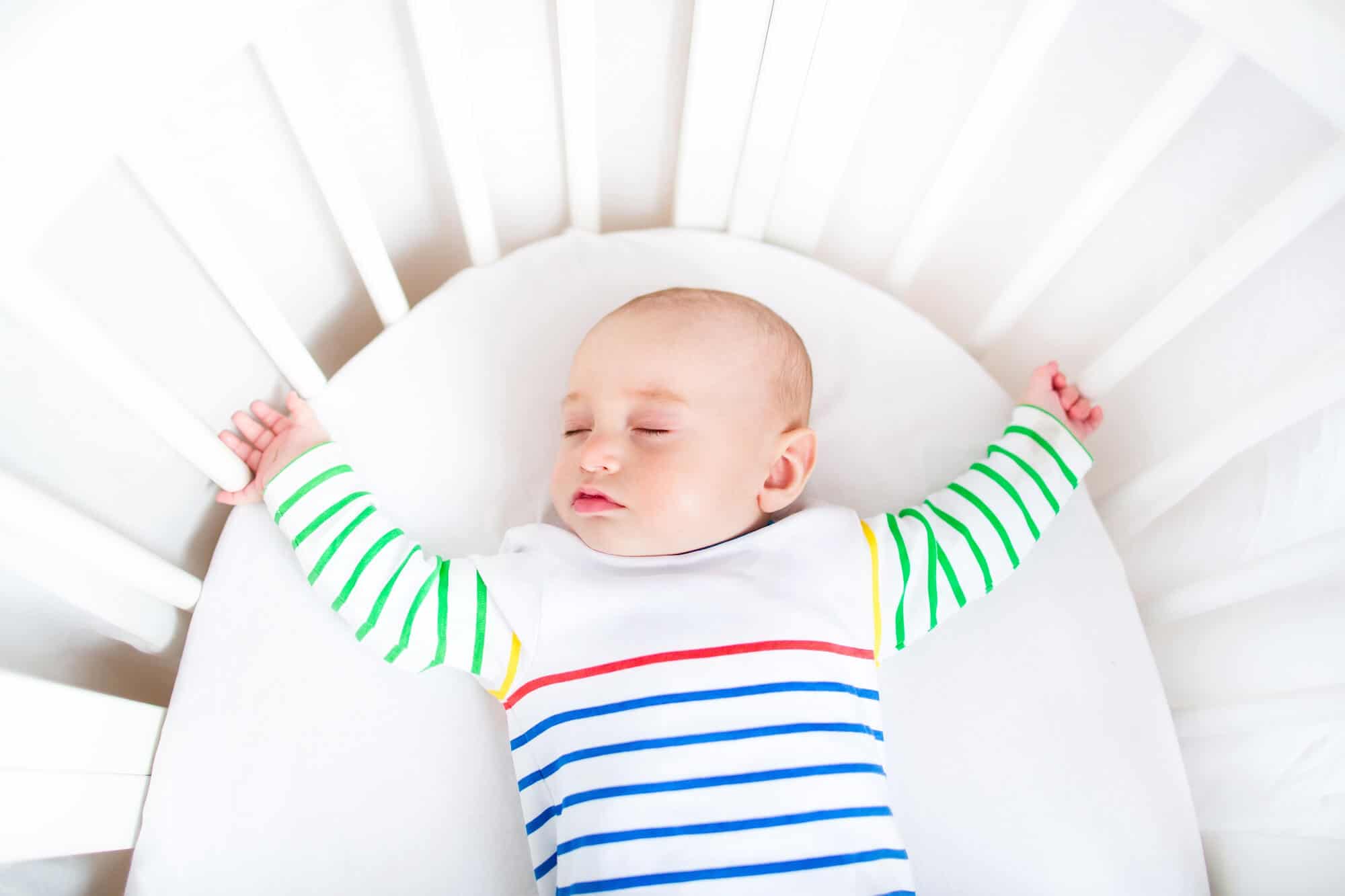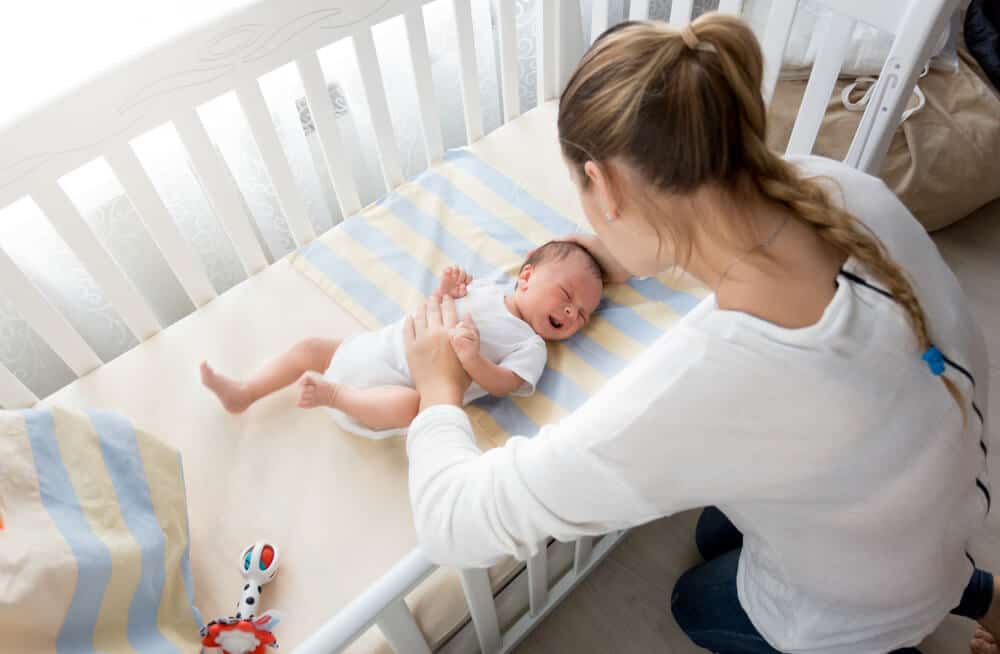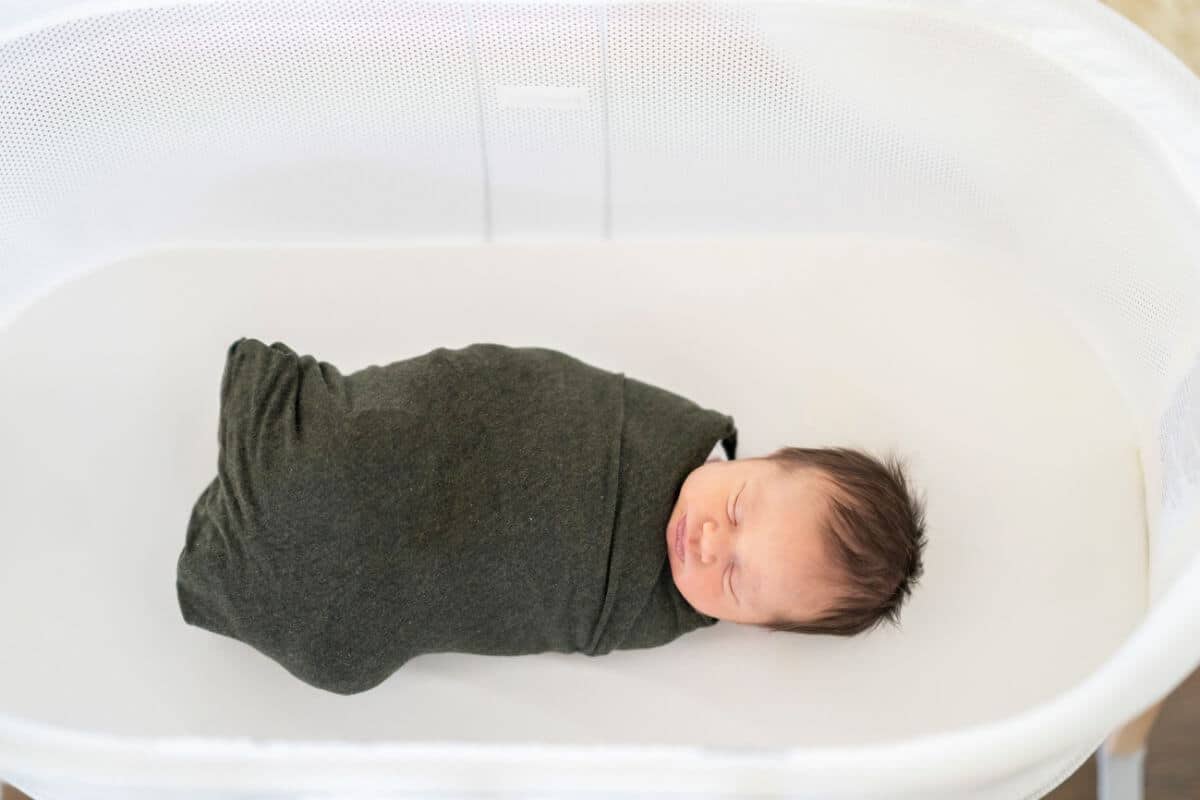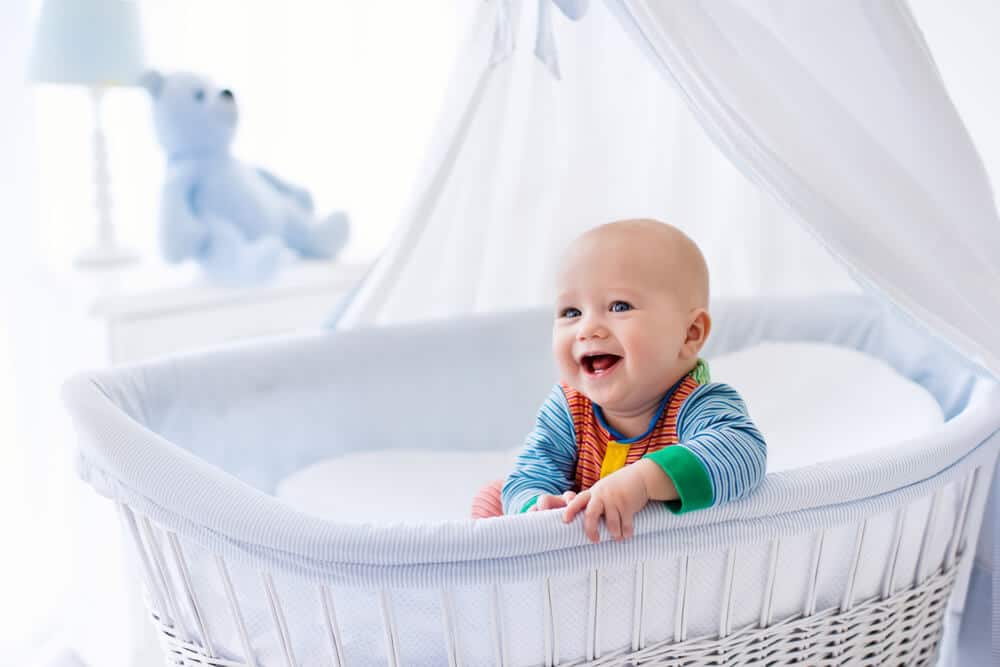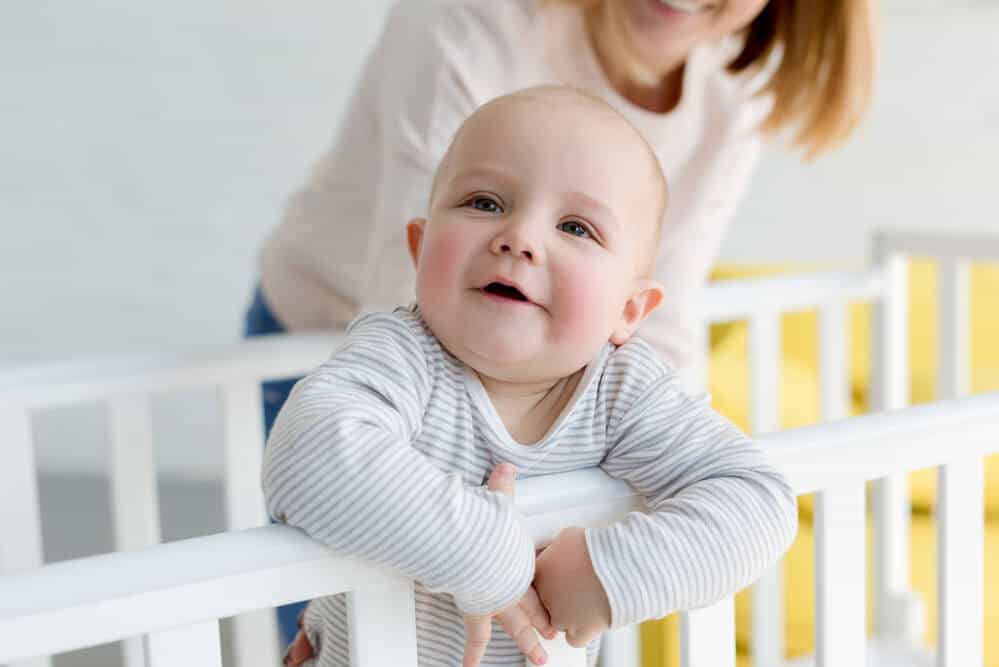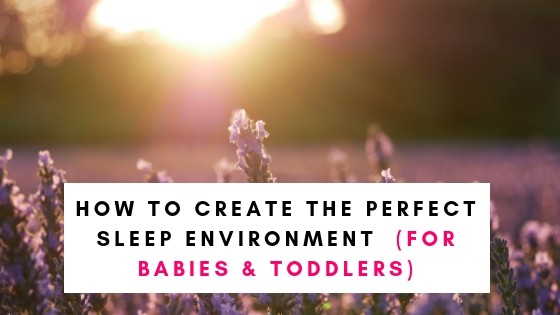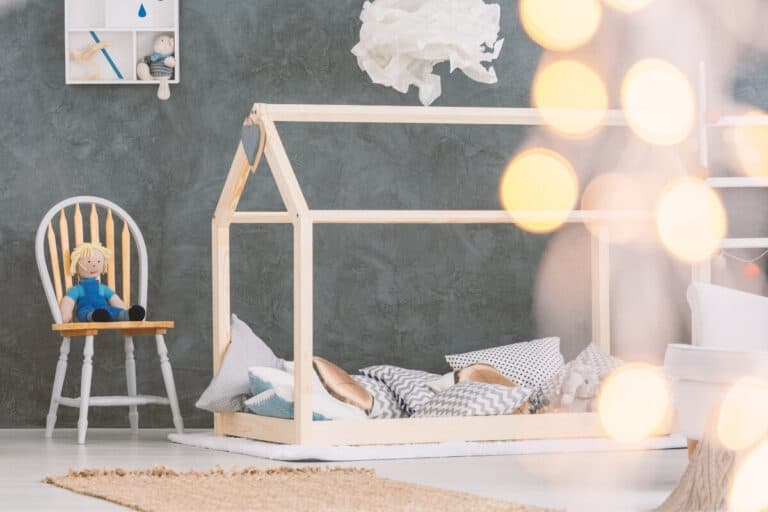How Long Can You Use A Bassinet Safely (And When To Stop)
When you have a newborn baby the first thing that you tend to obsess over, apart from your newborn, of course, is everything and anything related to baby sleep!
New parents often ask questions like; what is the best way to get baby to sleep? how to reduce the risk of sudden infant death syndrome (SIDS)? When will my baby sleep through the night? or how long can you use a bassinet?
If you’re wondering about how long you can use a baby bassinet you’re in luck! because that’s exactly what this post will cover!
So how can you tell if your baby is ready to move to their own room? Is a bedside sleeper safe? and what about just using a pack n play?
So let’s get started!
This post may contain affiliate links in which we earn a small commission on items purchased at no extra cost to you. you can read about this in our disclosure policy
Why Is A Bassinet A Good Choice For A Baby’s First Bed?
When you first come home from the hospital you want to have a close eye on your new baby for peace of mind. Not only because you want to soak in all that newborn sweetness, but the idea of running up and down the hallway in the middle of the night multiple times freshly postpartum and sleep-deprived is not fun!
Having a bassinet in your room, ideally next to your bed is a great option. It gives you the ability to have your baby close by for those first few months, which is actually the safest place for your baby to sleep according to the American Academy of Pediatrics. Plus having your baby in the same room as you greatly reduces the risk of SIDS and makes nighttime wakings a little bit easier to deal with.
Bassinets are also ideal for newborns because they are often on the smaller side and more lightweight than a standard crib, which can make your baby feel more secure in the early weeks.
Which Is Better For A Newborn’s Sleep: Bassinet Or Crib or Pack ‘n Play?
A bassinet is ideal for newborns because they are small and cozy which makes your baby feel comfortable and secure. They can fit into your bedroom more comfortably than a full-size crib and you don’t have to lean over as far to pick your baby up during the night. Your back will thank you for that!
A crib or mini crib is a great option for when your baby outgrows the bassinet stage, cribs are larger and have more features such as height adjustment and can often transform into a toddler bed later down the road.
A pack ‘n play is a versatile option that can be used as a bed, travel bed, or playpen. Many pack n play’s come with a changing table, bassinet, and you can adjust the height of the mattress which can make them a great choice for parents who are looking for an all-in-one solution.
Bassinet Benefits
While you may have spent months decorating and setting up the nursery in anticipation of your baby’s arrival, there are several benefits to using a bassinet for those first few months.
Bassinets are:
- small and portable, so you can keep your baby close by
- easy to put next to your bed
- cozy and comfortable for your baby
- ideal for newborns
- easier to lift baby out of at night for diaper changes and feedings
- perfect for nap times
What Should You Look For In A Bassinet?
There are several different styles of bassinets available on the market, from very simple designs to those that come with all the bells and whistles. Whether you choose a simple bassinet or one that rocks your baby for you (yes they actually exist). The most important thing to look for is that it meets all the current safety standards set by the Consumer Product Safety Commission.
You should look for a bassinet that:
- has a firm sleep surface
- a level sleep surface
- is the right size for your baby – not too big or too small
- has mesh sides to ensure good airflow
- comes with a warranty
- meets all safety standards set by the CPSC
- Has no bumper pads
Important: Wherever your baby sleeps i.e bassinet, crib or pack n play, should have a firm crib mattress, firm surface, a fitted sheet and have no loose blankets, loose bedding, soft objects, such as stuffed animals, sleep positioners or any other suffocation hazards.
Babies should always be placed to sleep on their backs until they are able to safely roll over from back to front and front to back alone.
How Long Can A Baby Safely Sleep In A Bassinet?
So how long can you use a bassinet? The AAP recommends using a bassinet until your baby is around four months of age or starts trying to roll over. At that point, it’s the perfect time to move your baby to their new crib.
Other signs include:
Baby’s Weight and Height
Not all bassinets are created equal! Bassinets come in different sizes and have different weight and height limits. One bassinet may have a weight limit of 15lbs while another has a weight limit of 30lbs. Once your baby reaches the maximum weight limit or height limit for their bassinet, it’s time to move them into a crib.
Rolling Over
Babies learn to roll over at different rates, but once your little one starts trying to roll from their back to their stomach or vice versa, it’s time for a crib.
Hitting The Sides
If your baby is moving around a lot and hitting the sides of the bassinet, it’s probably a good time to move to a larger space like the crib or a pack and play.
Newborn babies are born with a startle reflex, which means they may jerk or flail their arms and legs which can cause them to hit the sides of the bassinet. The best option is to swaddle your baby for the first months of life which will help prevent them from hitting the sides and waking up. You must stop swaddling your infant when they show signs of being able to roll.
Your Baby Can Sit Up
If your bassinet is on the larger height and weight limit but your baby is starting to sit up on their own, it might be time to make the switch to a crib.
Your Baby Can Pull Themselves Up
Bassinets have lower sides than a traditional crib, this is ideal for those first few weeks when you’re tending to your new baby multiple times per night. However, they can become a hazard if your baby can pull themselves up to a standing position.
Can My Baby Sleep In Their Bassinet If They Can Roll Over?
If your baby can roll over, it’s time to move them to a crib. Remember all babies reach milestones at different rates, so if your baby is trying to roll over earlier than four months old, it’s time for a new sleep space.
How To Transition Baby From Bassinet To Crib
If your baby has outgrown the bassinet or is showing signs that they need more space, it’s time to start thinking about transitioning them to a crib. The transition doesn’t have to be daunting, and there are a few things you can do to make it as smooth as possible for both you and your baby.
Here are a few tips for transitioning your baby from bassinet to crib:
1. Start by placing the crib in the same room as the bassinet. This will help your baby get used to the new sleep space while still being close to you.
2. Put your baby down for naps in their crib. You can start with just one nap a day and then gradually increase as your baby gets more comfortable.
3. Create a bedtime routine and be consistent with it! If your baby cries when you put them down in their crib, stay in the room with them until they fall asleep. You can gradually move further away from the crib as your baby gets more comfortable in their new sleeping area.
4. Have patience and give your baby time to adjust to their new sleep space. It may take a few days or even weeks, but eventually, they’ll be sleeping soundly in their crib.
Conclusion
When it comes to bassinets, not all are created equal. You should look for a bassinet that has a firm and level sleeping surface, is the right size for your baby, has mesh sides to ensure good airflow, comes with a warranty, and meets all safety standards set by the CPSC.
How long can you safely use a bassinet? The AAP recommends using one until your baby is around four months old or starts trying to roll over, at which point they should move up to a crib. If your baby is hitting the sides of the bassinet or moving around a lot, it might be time to make the switch.
Read Next: How to create the ideal sleep environment for your baby or toddler

